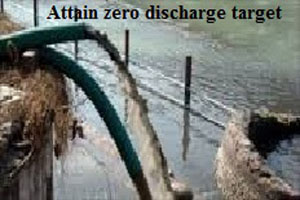
Haryana textile units to install ETP and attain zero discharge target
YarnsandFibers News Bureau 2015-07-11 12:00:00 – GurgaonIn order to stop pollutants from flowing into the Yamuna and turn each of them into a zero discharge unit, the Haryana State Pollution Control Board (HSPCB) has made it mandatory for all textile industries to treat and recycle discharged water. If directions are not followed by any unit, they will be sealed immediately, the HSPCB official said.
The board has instructed each unit to install an ETP (effluents treatment plant) and also put in place a reverse osmosis (RO) plant to re-use the discharged water. They have been given about 16 months (till December 2016) to put in place the required infrastructure. There are nearly 40 textile manufacturing units in Gurgaon, spread across Manesar and Udyog Vihar which release more than 25KLD (kilo litres water per day).
Last year, the National Green Tribunal instructed regulatory authorities in the state to issue guidelines to the industrial units on the setting up of 'zero discharge units'. According to the green court, a 'zero discharge unit' is the one that does not discharge any amount of liquid effluent, not even treated effluent.
According to HSPCB, textile industries use a lot of water in washing and dyeing and it is one of the major contributors of pollution in Yamuna. Though the amount of water used by a unit depends on its size and scale, a medium- to large-scale textile manufacturing unit, on an average, discharges 1 to 1.5 lakh litres of water per day. The discharged water flows into the Yamuna through the Najafgarh drain and it also affects the quality of groundwater in the area, said a senior HSPCB official.
However, Animesh Saxena, president of Udyog Vihar Industrial Association, said that zero discharge was not possible. In India, there is no technology to put in place zero discharge from a textile manufacturing unit. About 5% of water will per force be discharged.
Besides, according to city-based hydrologist Rekha Bajaj, the cost of installing an ETP is somewhere around %Rs 4-5 crore, which may not be commercially viable for many units.
But Bajaj was appreciative of the HSPCB initiative. Bajaj said that toxins released from dyes remain in water for a very long time which affects the water quality and hence the entire ecosystem of a river. Also, direct exposure to toxins can cause respiratory illness and skin disease among people living close to drains and rivers.
Market Intelligence
Ask for free sample Report

experience
Customer Base
dedicated team
Countries Served Worldwide









